How to Optimize Your Product Pages for SEO
Every eCommerce business wants to get more organic visitors to their store, who will ultimately convert and buy a product. One way to do this is if a visitor visits your homepage or a category page and then finds their way down to a product page.
However, there is a big opportunity for eCommerce stores to drive more organic traffic directly to their product pages, if they optimize them better for SEO.
Plus, keep in mind that a person who already has an idea of what product they want to buy are deep down into the purchasing stage and are ready to make a purchase.
They just have to land on your page, get convinced and hit the Buy Now button.
Now that you know the importance of having your product pages rank in Google, in this guide we’ll discuss some tips you can apply to get them to rank higher and bring high converting traffic.
Example of a Product Page and Keyword Search Term
First, let’s begin with an example of a person looking to buy a robot vacuum cleaner. There are several things they can type in Google.
Depending on where they are in the purchasing stage, they can search for:
- “robot vacuum” – name of product
- “irobot vacuum” – name of brand and product
- “irobot roomba i3” – name of brand and model
Name of product
A person who searches for “robot vacuum” might just be looking for information on the different brands, models, prices and types of robot vacuum cleaners.
They’re most likely doing their initial research and are not ready to buy.
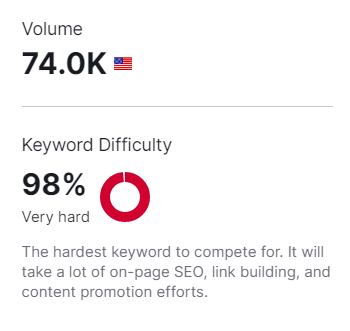
If we use Semrush’s keyword overview tool, we’ll see that the search volume for the term “robot vacuum” is very high 74,000 (US).
However, the keyword difficulty is also very high 98, making this a very competitive keyword to target.
Looking at the SERP (Google top 10 Search Results) we can see many best product guides by authority websites such as NYTimes, CNN, Wired, also Amazon’s Robotic Vacuums Product Category Page, etc., but there are no product pages at all.
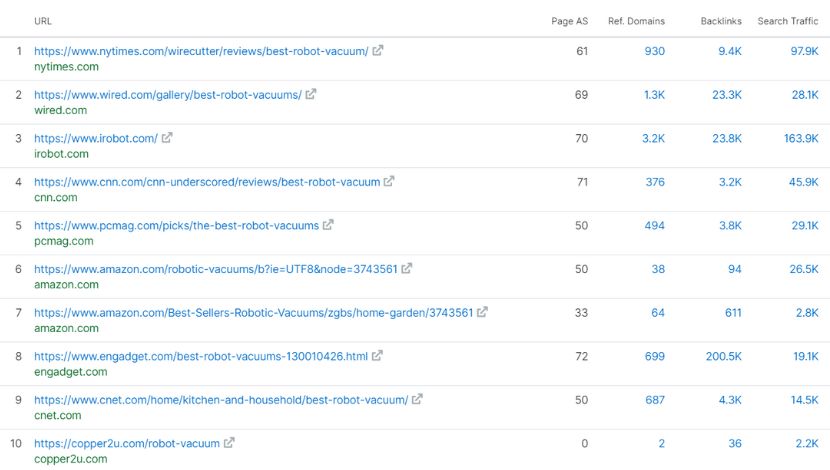
Name of brand and product
A person who searches for “irobot vacuum” already knows the brand they want to buy and wants to find out more information about the different models, features, and prices.
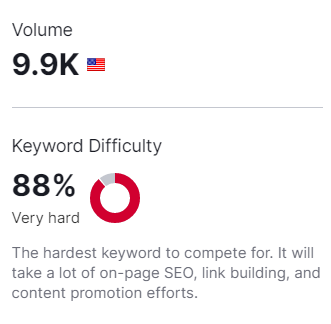
The term “irobot vacuum” has 9,900 monthly searches (US), again with high difficulty score.
Analyzing the SERP you can see irobot.com as the first result, followed by product category pages by Amazon, BestBuy, Home Depot, and a few Product Pages for the iRobot Roomba 675 model.
The rest of the results are best product review guides, along with some videos.
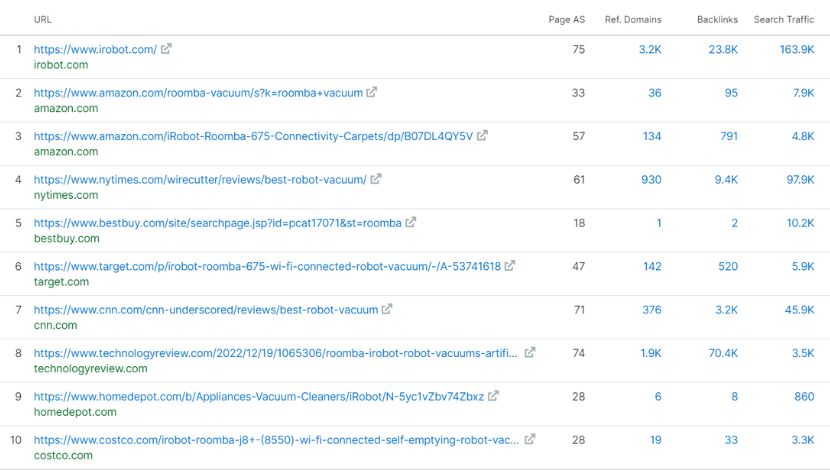
Name of brand and model
Finally, if a person searches for “irobot roomba i3“, that means that they already know the brand and model name of the vacuum cleaner they are interested in buying.
They are further down the purchasing stage and most likely want to compare prices, delivery fees, return policy terms, etc. by different eCommerce stores.
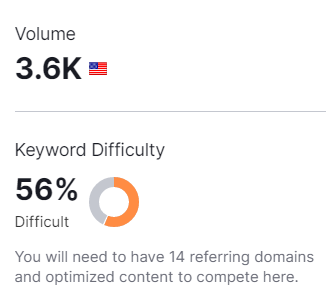
The term “irobot roomba i3” has 3,600 monthly search volume (US) and a difficulty score of 56.
The SERP of the term “irobot roomba i3” has product pages of eCommerce stores that sell this product online.
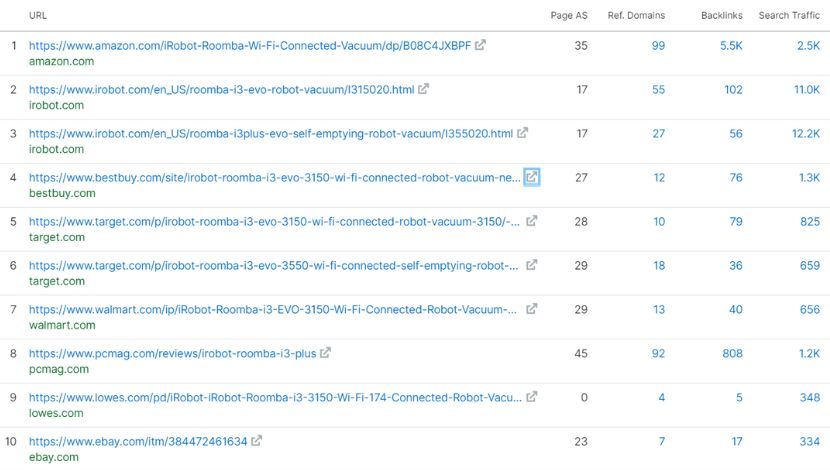
From the example above, we can see that terms containing the brand name and model of a product, are much more targeted. The SERP results are almost always product pages.
A person who is searching for a specific brand name and model of a product, already has an idea what they want to buy.
Therefore it’s important for eCommerce stores to optimize their product pages so they rank high in search results.
Product Page On-Page SEO Tips
Just like you’re optimizing your blog posts, how to guides, category pages, and other content on your site, you also want to opmitize your product pages.
Here are some tips to get you started:
1. Focus on the product name
Make sure you pick a product name that has important product details and aligns with your keyword strategy. You’ll want to include the name of the brand, product name, model number, and SKU if applicable.
For example if a person is looking to buy the product “Disney Pixar Lightyear Blast & Battle XL-15 Spaceship”. There are several things they can type in Google:
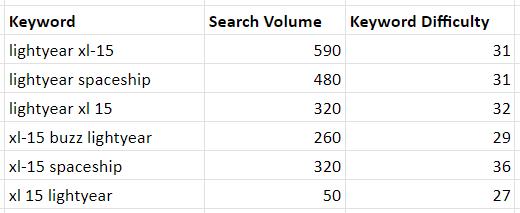
If you search for any of the above terms you’ll see product pages in Google’s search results for this item “Disney Pixar Lightyear Blast & Battle XL-15 Spaceship”.
Target’s product page has a well optimized and descriptive product name. This page ranks high for different variations of the product name.
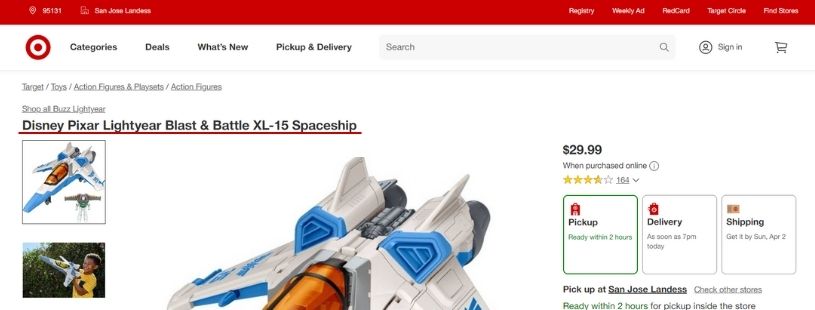
2. Have a good URL structure
Make sure that the URL structure of your product pages is descriptive and consistent. This will help visitors and search engines to better understand your site structure.
Plus, your product page will most likely get more clicks in Google, since users will see a URL that reflects their search query.
Have a good URL structure, which is descriptive, simple to read, short and consistent with the rest of the URLs on your site.
Here is an example of a good URL structure of the toy eCommerce store The Toy Insider.

3. Optimize your title tag and meta description
The title tag and meta descriptions are very important for product page SEO. They’ll appear in the Google search results so you want to include details such as:
- Brand and name of the product, model number, etc.
- Have important keywords in the beginning
- Easy to read and unique text
Larger stores who sell hundreds of products may have a template that generates the title and meta description automatically. However, ideally all of your meta descriptions should be unique.
4. Incorporate structured data
You’ll want to add Schema Markup to your Product pages, making them eligible for rich results in search. This way your ecommerce store will stand out from the rest of the competition in Google’s search results.
Right below the meta description you’ll be able to display enhancements called rich results (or rich snippets). They include: star ratings, reviews, size, price, availability, and much more.
Here are is an example:

So make sure you have the correct structured data before implementing it across your site. You can test your Schema Markup to see if it’s working properly by using Google’s Rich Results Testing Tool.
5. Write good product descriptions
When it comes to SEO make sure that your all your product descriptions are unique. Don’t copy and paste information provided by the product’s manufacturer.
Most likely that information can be found on dozens of websites, and this will create a problem with duplicate content, which can in turn result in lower rankings.
You want to write unique and engaging content descriptions that describe the benefits and features of your product. Ultimately you want to convince the user to buy the product from you.
6. Add high quality images
Since a visitor can’t really see the product in person, make sure you have high quality images added that show the product in detail and in context. This will help improve conversion rates.
Here are some guidelines when adding images:
- Include the product name in the image file name and ALT attribute.
- Choose the right file type. In most cases, JPEGs are considered the best image format for ecommerce or you can check out the new popular WebPformat.
- Compress the images in order to decrease their file size.
- Have the images included in an image XML sitemap.
- Most importantly, make sure the images load fast and are not slowing down the page load time.
If you have videos, make sure you add those as well as they can greatly improve conversion rates.
7. Include breadcrumbs
Breadcrumbs will help users track where they are in a website. They also help users navigate and find content within your site, by clicking on the breadcrumbs instead of the Menu links.
It makes navigating your website much faster and easier for users, which in turn lowers bounce rate and increases engagement.
Here is an example of breadcrumbs on a product page:
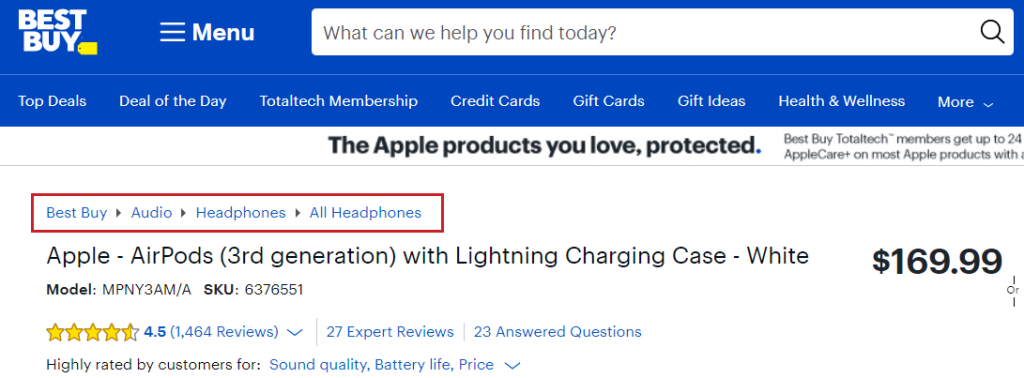
When a user lands on the product page, they can click on “All Headphones” or “Audio” and check out what other headphones and audio products the website sells.
This can be done easily with one click from the Breadcrumb links, instead of having to click on the Menu and then search for the Headphones category.
8. Include a FAQ or Q&A section
Depending on the products you sell you might want to consider adding an FAQ or Q&A section to your product pages.
There you can add important questions and answers that customers might have about the product before they buy it.
For example, the website Juiced Bikes has Size and Fit, Technical Specifications, and Product FAQ section on their product pages. This helps visitors get as much information about the product as possible.
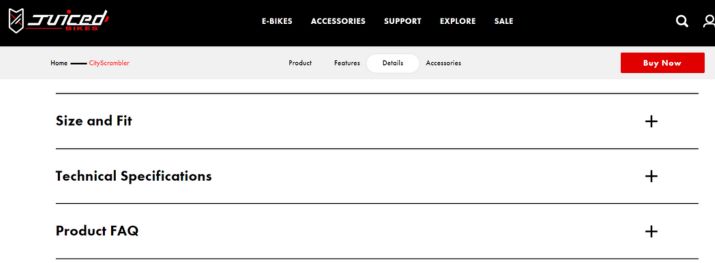
Another benefit of having FAQ or Q&A section on your website, is that it will cut down on questions that customers might ask your customer support team.
Additionally, make sure you use FAQ schema to your page, which will help it quality and show as a SERP feature on Google’s search results.
9. Have customer reviews and photos
Having real customer reviews and photos on a product page can help build trust and improve user experience.
Visitors can still read the description and see photos of the product, added by the website itself.
However, many will also want to read through real customer reviews and see the good and bad things people have said about the product before they purchase it.
Make sure you have Product Schema so that the reviews will show as rich snippets on Google’s search results and attract more visitors.

10. Keep page load times down
One of the most important SEO ranking factors is having your site load fast on mobile and desktop devices.
Page speed it also important to potential customers. According to a survey conducted by Unbounce, nearly 70% of customers admit that page speed impacts their willingness to buy from an online retailer.
Use Google’s PageSpeed Insights tool to see how fast your product pages load on Mobile and Desktop. Make sure you focus more on the mobile loading speeds, since more and more people are using their phone for shopping.
Conclusion
Most online retail stores focus on optimizing their homepage, category pages and blog posts, with product pages often being overlooked.
However, improving your on-page SEO will help your product pages rank better in Google.
So take the time to implement the SEO tips discussed in this guide, and you’ll soon see an improvement in your rankings.






